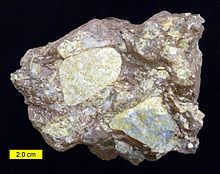Type sedimentary Extent Pennsylvania, Maryland Thickness 2,103 m | Other conglomerate Named by Stose and Bascom, 1929 Primary Slate, Sandstone | |
 | ||
The New Oxford Formation is a mapped bedrock unit consisting primarily of sandstones, conglomerates, and shales. The New Oxford Formation was first described in Adams County, Pennsylvania in 1929, and over the following decade was mapped in adjacent York County, Pennsylvania and Frederick County, Maryland. It was described as "red shale and sandstone with beds of micaceous sandstone, arkose, and conglomerate." The majority of this early mapping was done by G. W. Stose, A. I. Jonas, and Florence Bascom.
Contents
Depositional Environment
The New Oxford Formation and other formations of the Newark Supergroup were deposited in the Gettysburg Basin, just one of many Triassic rift basins existing on the east coast of North and South America, which formed as plate tectonics pulled apart Pangaea into the continents we see today.
Stratigraphy
The New Oxford Formation is overlain by the Gettysburg Formation in Frederick County, Maryland and in Adams, Cumberland, Lancaster, and York Counties in Pennsylvania. In all other areas to the northeast in Pennsylvania the New Oxford Formation is overlain by the Hammer Creek Formation.
The New Oxford Formation overlies precambrian and paleozoic rocks at the bottom of the Gettysburg Basin.
The New Oxford Formation is not divided into members.
Vertebrate fauna
The New Oxford Formation contains dinosaur fossils.
Age
Relative age dating of the New Oxford Formation places it in the Late Triassic period.
